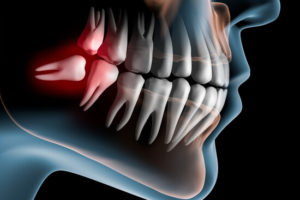Why Wisdom Tooth Extraction Pain Occurs After The Procedure?

Wisdom tooth comes out between ages 17 to 25. This is a common dental condition where a tooth emerges from the back portion of the gums. Oftentimes, wisdom teeth cause pain and would require a surgical operation for removal. Wisdom tooth extraction pain occurs due to different reasons like a dry socket, infection, and swelling which we will discuss later on. Check this page if you wish to have your wisdom tooth removed without any complications.
Why You Need Wisdom Tooth Extraction
First of all, let us find out why tooth extraction is necessary. According to dentists, wisdom tooth extraction is not always the first recommended procedure. Most of the time, if the wisdom tooth comes out perfectly, it will not cause any harm or complication to dental health. However, if discomfort, pain, and swelling occur, extraction may be executed.
Listed below are some of the reason why wisdom tooth extraction is needed:
- They are pushing your other healthy teeth. When the wisdom tooth erupts in a horizontal or diagonal way, it might have the tendency to affect other teeth and cause misalignment. This could result in overlapping teeth and eventually cause mild to extreme pain.
- A wisdom tooth can cause jaw damage. Fluid sac could take place following a wisdom tooth eruption, when this happens, jaw and nerve damages will follow through. Immediate wisdom tooth extraction is needed in order to prevent further damage.
- It might lead to sinus pain and problems. As the tooth starts to grow, it puts pressure on the sinus and causes severe sinus headache and discomfort. Make sure to inform your dentist if this occurs.
- Wisdom teeth can cause gum inflammation. Due to infection around the impacted teeth, gum inflammation along with redness and soreness will take place. The only solution to prevent this from growing is by extracting the wisdom tooth.
- Cavities and bacteria growth. If the inflammation gets worse, cavities will start to build-up and bacteria will start to grow, without treatment, this might result in serious dental health issues.
- Tooth decay. A wisdom tooth is more susceptible to tooth decay because of its placement in the mouth. Apart from this, a decaying wisdom tooth can affect the surrounding teeth and spread bacteria all over the mouth.
As mentioned, wisdom tooth extraction is not always recommended. Your dentists will need to examine and require tests to determine if the wisdom tooth is in need of extraction. Removal of the tooth might not be advised due to the following reasons:
- The wisdom tooth seems perfectly healthy.
- It is full-grown and fully erupted.
- It is aligned correctly and functions well for biting and chewing purposes.
- The wisdom tooth can be cleaned with regular oral care.
- They are not causing any pain and discomfort.
When To See A Dentist
You might need to consult a dentist if the following symptoms persist:
- Your gums are starting to swell and bleed
- You are experiencing pain and swelling in the jaw area
- Bad breath
- Odd taste in the mouth
- Trouble in opening and closing your mouth
These symptoms could be quite hard to deal with and might even leave you in deep agony. It would be wise to visit your dentist as early as possible to avoid the occurrence of serious oral damage that may be irreversible once the condition gets worse.
Wisdom Tooth Extraction Procedure
To fully understand why pain occurs after the wisdom tooth extraction, it would be better to know how the whole procedure precedes and how it affects the gums and teeth respectively. After identifying the root cause of your wisdom tooth pain, your dentist will explain to you why your wisdom tooth needs to be removed. the process of removing a wisdom tooth include the following:
First, you will be induced with anesthesia to numb the pain. It comes in three different categories such as local, sedation, and general anesthesia. What will be given to you will depend on your pain tolerance.
After the anesthesia kicks in, the dentist will make an incision to reveal the wisdom tooth. With a complete view of the tooth, the dentist will be able to remove the bone that’s blocking the tooth root. The tooth will be divided into tiny sections to make the extraction easier.
Once the tooth is removed, the extraction area will be cleaned out to prevent infection. The wound will also be stitched to make the healing process faster. Lastly, gauze will be placed on top of the treated area to manage the bleeding caused by the operation.
Risks and Complications
Generally speaking, wisdom tooth extractions are deemed safe as long as it was performed by a licensed and professional dentist. But despite that, risks and complications might arise if the patient has not followed the aftercare procedures and neglected proper oral care regimen. Complications can include:
- Dry socket. A dry socket might take place a few days after the surgery. This is due to the loss of blood clot in the treated site.
- Infection in the socket because of confined food particles and bacteria
- Injury to close teeth, gums, and jawbone.
- Swelling. Pain and swelling are quite common when it comes to tooth extraction, this should last for about 1 to 2 days and start to fade afterward. However, severe pain after a week is not normal and requires immediate medical attention.
- A stiff jaw might also become a problem following a wisdom tooth extraction, consult your dentist right away if you have difficulty in opening your mouth.
- Bleeding after a wisdom tooth surgery can be scary to think of, but this is a necessary precaution to help blood clot build-up. Once the blood clot is completed, the bleeding will subside. Saltwater is an effective remedy to minimize bleeding.
Your dentists will most likely advise you to follow certain aftercare procedures to ensure the fast recovery and healing of the treated site. Make sure to follow these simple steps to prevent infection and complications:
- Do not remove the gauze right away. Let it sit on the treated area for a few hour
 s.
s. - Avoid alcoholic drinks and smoking for 24 hours.
- Chew with the other side of your mouth and avoid using the treated site for a while.
- Use salt water to rinse your mouth. Regular use of saltwater can decrease the pain and clean out your whole mouth.
- Do not use straws and avoid making extreme facial expressions that might have direct effects on your newly operated gums.
- Continue your regular oral care regimen but be gentle on cleaning the area with stitches.
- Avoid extreme physical activities and rest for at least a week.
- Take the prescribed anti-inflammatory drugs to control the pain.
If complications still occur despite your best effort to keep your oral health in check, consult your dentist right away and explain your dental issues. You can also visit this website: RandwickSmiles.com.au, if you’re seeking for a dental clinic near the Randwick area.


